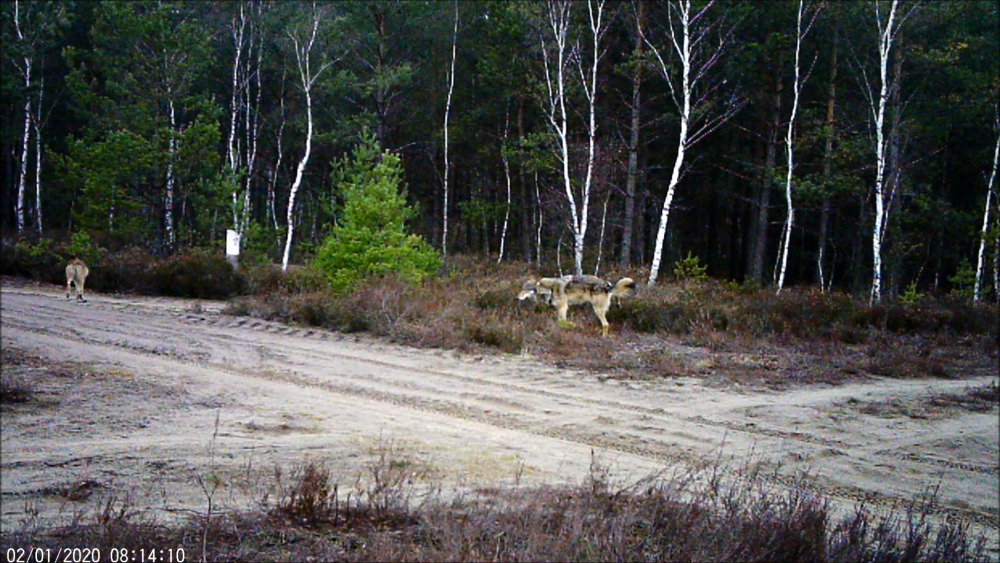Wolves and forest roads
In the latest issue of Mammalian Biology, we have published the results of our research on the use of forest roads by wolves in the Lower Silesian Forests. This one of Poland’s largest dense forest complexes is largely a pine plantation established by German foresters in the 19th century. In order to facilitate the cultivation and exploitation of the forest, they divided it into 375 m wide and 750 m long sections. Such units are separated from each other by roads, most of which can be accessed even by a passenger car. Forest roads and sections create a chessboard structure that allows easy access to any part of the forest (the density of forest roads is 4 km/km2). The Białowieża Primeval Forest has a similar structure of sections and roads, but the units are larger – verst per verst (around 1067 m), and the density of forest roads is 1.2 km/km2. The similarity is not accidental – the Białowieża Primeval Forest was also managed by German foresters, in this case in the service of the Russian tsars. Read more in our essay.
Roman Gula and Katarzyna Bojarska

